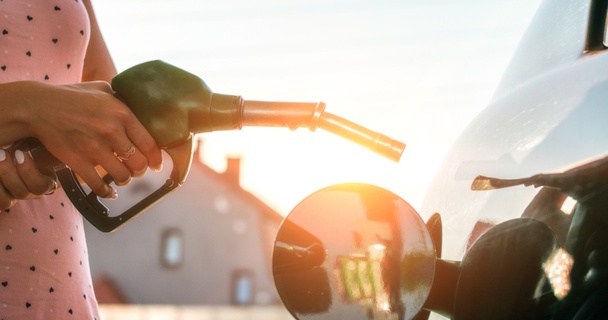Fuel prices have skyrocketed over the last few years, and look set to remain relatively high. This, among other rising living costs, has caused many of us to think about where to find the cheapest fuel, and how to make each top-up stretch further.
How to find the cheapest petrol
Even though fuel prices have risen across the board, not all petrol stations are charging the same amount.
As a general rule, petrol stations at motorway services, or near motorway exits, tend to be the most expensive. This is because the operators know they have a captive audience: if you’re running low on fuel, better to refill while you can than risking your tank running dry before you find a cheaper petrol station to use.
On the flip side, local petrol stations - particularly supermarket petrol stations - usually provide the cheapest opportunities to fill up.
To find the petrol station selling the cheapest fuel in your area, PetrolPrices is a handy, free tool to use. Simply sign up, enter your postcode, and you’ll be able to see the nearest and cheapest places to refuel. They also have an app so you can check your options on the go.
Just remember to make sure you’re parked up safely and your engine is turned off before you use your phone in the car. Otherwise, you’ll be breaking the law and could face a fine, as well as points on your licence.
Is it worth driving further for cheaper petrol?
So, you’ve found the cheapest fuel near you, but it’s on the other side of town. Is it worth making a special trip, or going out of your way?
There are two questions to ask yourself when deciding whether to drive further to get cheap petrol:
- How much cheaper it is?
- How much will it cost you in fuel to get there and back, based on your car’s fuel consumption?
Then you'll be able to work out if you'd make a saving overall. Let's look at an example.
How much cheaper is it?
Let’s say you need to buy three-quarters of a tank of fuel - or 41.25 litres, for example.
The fuel station nearest to you – half a mile from your home – is charging 164.9 pence per litre of unleaded petrol. However, the supermarket four miles away is only charging 159.9 pence per litre of unleaded petrol. In this example, it’d cost you £68.02 to fill up at the nearer fuel station. At the supermarket, it’d cost you £65.95 – a saving of £2.07.
How much will it cost you in fuel to get there?
If you can’t tie in a trip to get fuel from the supermarket with your weekly food shop, is a special trip for this saving worth it? This is where looking at your car’s fuel consumption, or how many miles per gallon (mpg) it does, comes in.
According to NimbleFins, the average petrol car can go about 36 miles per gallon (but this varies from one car to another). In this example, the cheapest petrol is an eight-mile round trip away. You can work out how many litres of fuel a journey will use by taking the number of miles you need to travel and dividing it by the mpg - then multiplying the result by 4.55 litres, like this:
8 miles divided by 36 mpg = 0.22 gallons
Multiplied by 4.55 litres = 1.01 litre (costing roughly 159.9 pence in this example)
On the flip side, the 1-mile round trip to the nearest - but more expensive - petrol station would use just 0.12 litres of petrol, costing 20 pence. But remember, even though it costs you less to get there, it would be about 67 pence cheaper at the supermarket fuel station (when you take fuel consumption into account):
Nearby expensive petrol station = £68.02 to fill up + 20p to get there and back = £68.22
Cheap supermarket petrol station = £65.95 to fill up + 159.9p to get there and back = £67.55
£68.22 - £67.55 = 67 pence cheaper at the supermarket
However, whether it's worth driving further to make a saving, no matter how big or small, also depends on how much time you want to spend driving.
To work out your own, real-world costs, you can find the cheapest fuel near you using PetrolPrices as we mentioned before, and check your car’s fuel consumption here.
How to make your fuel go further
As well as finding cheaper spots to fill up, making your fuel go further, so you don’t have to fill up as often, is also on a lot of people’s minds. Here are our top tips:
Eco-driving
Driving more economically may start before you even get behind the wheel. Perhaps you can empty your boot and back seat of unnecessary clutter to make your car lighter – extra weight in the car means extra fuel, after all. Or, if your car needs de-icing, grabbing a scraper to deal with it rather than using your car’s heater to melt the ice from the inside will mean you save a little bit of fuel.
When it comes to driving around, smooth and steady is the way to go, according to the AA. For the most efficient driving style, avoid flooring it or slamming the brakes on – gentle use of your accelerator and brake pedals is the most economical. You can also try switching to a higher gear at a lower speed than you usually do. Since 2014, new car models have included a “gear shift indicator” as standard, that lights up when it’s fuel-efficient to switch it up a gear. Handy to have!
Carpooling
If you commonly drive the same route at the same time as a colleague, parent, or friend who lives close by, then taking it in turns to give each other a lift means you’ll both use less fuel than if you drive separately.
Not sure you know anyone you could carpool with? Check with your employer. Some companies run their own carpool schemes to help you find people you could share lifts with. You may even get perks like priority parking spots close to the entrance of your workplace!
Ditch the motor
Driving everywhere may be convenient, but sometimes leaving your car at home can be a much cheaper option. For short journeys in particular, like doing the school run or nipping to the corner shop, walking or cycling will not only save you petrol, they’re good for you, too. And who doesn’t like the chance to get some exercise and save money?
For longer journeys, using public transport could be a cost-effective option. To work out whether it’s worthwhile, you’ll need to know the cost of the bus or train tickets you’ll need, per person, as well as roughly what you’d spend on petrol and parking if you drove the journey. If you’ll need to drive to your nearest train station or bus stop, you can factor that in, too.
Train and bus operator websites are a good starting point to find their ticket prices. And to work out your petrol costs, you’ll need to know the distance for the round trip as well as your car’s average fuel consumption. Then you can use the sums we showed you earlier to work it out.
If you’re travelling in a group, the total cost of tickets is likely to be much more than you’d spend on petrol and parking, so driving might be the cheaper choice. But if you’re by yourself, leaving your car at home could be a cost-effective way to travel.
Find more ways to save money every day with these 100+ easy money-saving hacks!









